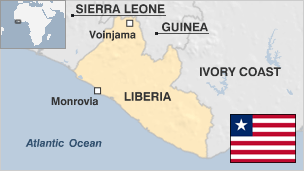ON CONSTITUENCY AND REPRESENTATION
Ibrahim Al-bakri Nyei
The dynamism of our country in all sectors is faced with the problem of meeting the challenges of globalization and development. Since the end of the civil war, attempts to make strategic reforms in all sectors to set proper national development agenda have not been realistic and effective. The leakages have primarily been due to the unavailability of relevant statistics and data to tell the total number of people in the country, and give the actual composition of our resources and mosaic- social, geographic and economic information.
With the conduction of the 2008 Census, the discourses have extended with appendages to all ends. National development agenda, according to development specialists is drawn and implemented according to population distribution in a given community. Our reform and development strategies, therefore, will have to consider with priority those counties that are highly populated before those with fewer populations. Our representation in the legislature, also, has to be redistributed on the basis of population per county in continuation of the reform process and in consonance with the Constitution.
In terms of parliamentary composition and structure, particularly a bicameral legislature, members of the House of representatives are practically and theoretically drawn from the people in numerical consideration of their population, while members of the upper house or senate, are equally divided to represent the political subdivisions. That is why it has been conceptualized that the representatives represent the people, and the senators represent the political subdivision.
Like the United States, from whose system we formulated our system of government, membership in the House is based on each state’s population, and the size of the House is therefore not specified in the Constitution. But for the Senate each state is entitled to two that is why Rhode Island, the smallest state, with an area of about 3,156 sq. km. has the same senatorial representation as Alaska, the biggest state with an area of some 1, 524, 640 sq. km. Regardless of population, every state is constitutionally guaranteed at least one member of the House. At present, seven states – Alaska, Delaware, Montana, North Dakota, South Dakota, Vermont, and Wyoming – have only one representative. On the other hand, six states have more than twenty representatives, and California alone has fifty-two.
The European Union parliament has 732 members apportioned among the EU’s 25 countries on a modified population basis. The most populous country, Germany, has 99 seats and the least populous, Malta, has five seats.
The ongoing debate in the Liberian legislature on the issue of constituency and representation should be an anathema if indeed we are constitutionalists and pragmatists. But unfortunately, people are ignoring the mobility of the population as indicated by the census result to claim that there are attempts to disenfranchise their people. Who then are the people? Let it be clear that where ever the people are there were they should be represented from in the House. So wherever the people moves, they literally take there seats with them there. It is on the basis of accepted threshold that our constituencies are carved, and subdivisions that do not meet the accepted threshold are given some guarantees to be represented with specific amount of representatives.
The results of the 2008 census tell that we are a little over 3.5 million with some counties densely populated and some sparsely populated. If the 20, 000 provision is to be adhered to, then we will have to open up for a constitutional referendum or revision, but where in the constitution provided that the legislature can adjust the representation in the House to a number not exceeding one hundred, it is prudent that the given threshold of 45,000 per constituency be used and that every county be guaranteed with at least 2 seats regardless of populations. The number of representation per county is not in any way an indicator of development or economic growth for such county; it is the quality of the representation which is underpinned by the integrity, political-will and competence of the representative occupying the seat that makes the lawmaking effective and credible.
In fact, there are arguments now that the more there are people on a decision or lawmaking body, the less functional and effective it becomes in making executive and influential decisions, and conversely. That is why conservatives are robustly challenging the proposals of increasing the members of the United Nations Security Council from 15.
Finally, this era must be considered as an era of reformation, and we must now begin to put forth arguments and proposals that will benefit the national interest, instead of thriving on trivialities on the basis of regional divides. I hope that one day we will all make laws and say that this will benefit the country and not the county.
-In the Cause of Democracy and Social Justice, the Pen shall never Run Dry-
Subscribe to:
Post Comments (Atom)




No comments:
Post a Comment